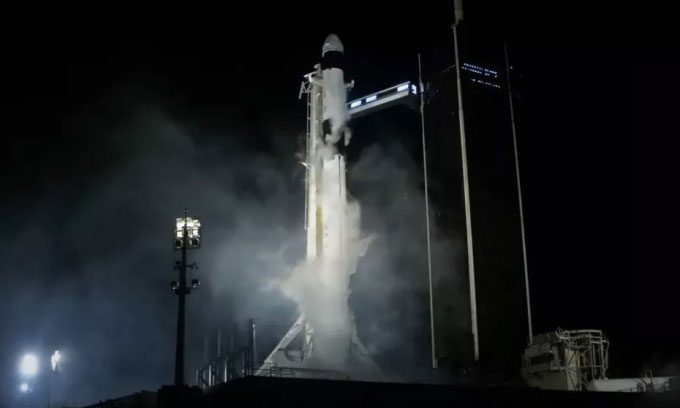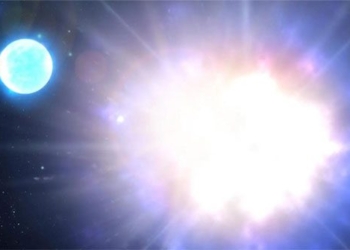SpaceX and NASA Cancel Astronaut Launch to International Space Station (ISS) Due to Rocket Issue

Dragon spacecraft atop SpaceX’s Falcon 9 rocket at Kennedy Space Center, Florida, on February 27. (Photo: NASA TV)
As planned, SpaceX’s Falcon 9 rocket and Dragon spacecraft were set to launch four astronauts of the Crew-6 mission to the International Space Station (ISS) for NASA at 1:45 PM on February 27 (Hanoi time) from Kennedy Space Center in Florida.
However, with about two minutes left on the countdown, the launch was aborted due to an issue related to TEA-TEB, a liquid used to ignite the engines of the Falcon 9 rocket at liftoff. The decision to cancel the launch was made very cautiously, according to Kate Tice, a systems engineer at SpaceX.
The four astronauts on the Crew-6 mission include Stephen Bowen and Woody Hoburg (NASA), Andrey Fedyaev (Russia), and Sultan Al Neyadi (UAE). This mission is historic as Al Neyadi will become the first UAE astronaut to undertake a long-duration mission on the ISS. His compatriot, Hazzaa Ali Almansoori, visited the ISS in 2019 but only stayed for 8 days.
The four astronauts boarded the Dragon spacecraft, which is positioned atop the Falcon 9 rocket, a few hours before the launch. They had to wait for the rocket to be fully drained of fuel before beginning the process of disembarking from the 70-meter tall spacecraft and rocket. The crew will remain at Kennedy Space Center until the next launch opportunity.
The next launch window is scheduled for 1:22 PM on February 28, but it is currently unclear whether the issue with TEA-TEB will be resolved in time. Experts are monitoring adverse weather conditions that could affect this launch plan, according to Steve Stich, NASA’s Commercial Crew Program Manager. Backup launch windows are available starting from March 2.
Once Bowen, Hoburg, Fedyaev, and Al Neyadi arrive at the ISS, they will take over operations from Crew-5, the crew that has been working on the station since October 2022. The Crew-6 team is expected to stay for approximately six months, conducting scientific experiments and maintaining the over 20-year-old space station.





















































